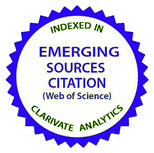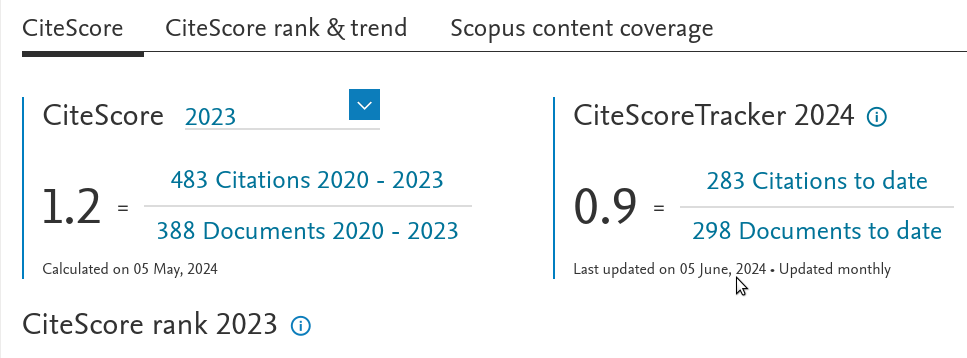Наближення молекулярного поля в теорії феромагнітного фазового переходу в розбавлених магнітних напівпровідниках
DOI:
https://doi.org/10.15407/ujpe66.6.503Ключові слова:
розбавленi магнiтнi напiвпровiдники, феромагнiтне впорядкування, наближення середнього поля, РККI взаємодiяАнотація
У цiй роботi педагогiчного характеру викладено порiвняльний аналiз двох загальних пiдходiв, що описують феромагнiтний фазовий перехiд у розбавлених магнiтних напiвпровiдниках (DMS), з точки зору наближення поля Вейсса. Припускаючи скiнчену спiнову поляризацiю домiшкових магнiтних iонiв, ми розглядаємо обмiнну взаємодiю цих магнiтних iонiв i вiльних носiїв заряду напiвпровiдника в першому порядку теорiї збурень i отримуємо однорiдне молекулярне поле Вейсса, яке поляризує спiни носiїв. У свою чергу, ця спiнова поляризацiя вiльних носiїв створює ефективне поле, яке може стабiлiзувати спiнову поляризацiю DMS нижче критичної температури TC. Трактування такої самоузгодженої спонтанної намагнiченостi DMS може здiйснюватися з точки зору спiн-спiнової взаємодiї мiж магнiтними iонами, незалежної вiд вiдстанi мiж ними i нескiнченно малої в термодинамiчнiй границi. З iншого боку, врахування додатково ефектiв обмiнної взаємодiї магнiтних iонiв i вiльних носiїв заряду у другому порядку теорiї збурень описує поле Вейсса в термiнах непрямої спiн-спiнової взаємодiї Рудермана–Кiттеля–Касуя–Йосиди, яка осцилює i не зникає при скiнчених мiжiонних вiдстанях при скiнченiй концентрацiї носiїв. Обидва пiдходи приводять до однакової температури Кюрi TC у випадку некорельованого однорiдного випадкового розподiлу локалiзованих спiнових моментiв по об’єму зразка. Ми обговорюємо походження такого збiгу та показуємо, коли це не так у iнших бiльш реалiстичних моделях DMS зi скiнченою електропровiднiстю (концентрацiєю носiїв струму).
Посилання
A.V. Komarov, S.M. Ryabchenko, O.V. Terletskii, I.I. Zheru, R.D. Ivanchuk. Magneto-optical studies and the double
opticomagnetic resonance of the exciton band in Mn2+-doped CdTe. JETP 46, 318 (1977), [translate from Zh. Exp. Teor. Fiz. 73, 608 (1977)].
Introduction to the Physics of Diluted Magnetic Semiconductors. Edited by J. Kossut, J.A. Gaj (Springer, 2010).
E.A. Pashitskii, S.M. Ryabchenko. Magnetic ordering in semiconductor with magnetic impurities. Sov. Phys. Solid State 21, 322 (1979).
C. Zener. Interaction between the d-shells in the transition metals. Phys. Rev. 81, 440 (1951).
https://doi.org/10.1103/PhysRev.81.440
C. Zener. Interaction between the d-shells in the transition metals. III. Calculation of the Weiss factors in Fe, Co, and Ni. Phys. Rev. 83, 299 (1951).
https://doi.org/10.1103/PhysRev.83.299
M.A. Ruderman, C. Kittel. Indirect exchange coupling of nuclear magnetic moments by conduction electrons. Phys. Rev. 96, 99 (1954).
https://doi.org/10.1103/PhysRev.96.99
T. Kasuya. A theory of metallic ferro- and antiferromagnetism on Zener's model. Progress of Theoretical Physics 16, 45 (1956).
https://doi.org/10.1143/PTP.16.45
K.Yosida. Magnetic properties of Cu-Mn alloys. Phys. Rev. 106, 893 (1957).
https://doi.org/10.1103/PhysRev.106.893
J.H. Van Vleck. Note on the interactions between the spins of magnetic ions or nuclei in metals. Rev. Mod. Phys. 34, 681 (1962).
https://doi.org/10.1103/RevModPhys.34.681
T. Story, G. Karczewski, L. Swierkowski, R.R. Galazka. Magnetism and band structure of the semimagnetic semiconductor Pb-Sn-Mn-Te. Phys. Rev. B 42, 10477 (1990).
https://doi.org/10.1103/PhysRevB.42.10477
T. Dietl, H. Ohno. Dilute ferromagnetic semiconductors: Physics and spintronic structures. Rev. Mod. Phys. 86, 187 (2014).
https://doi.org/10.1103/RevModPhys.86.187
Y.G. Semenov, S.M. Ryabchenko. Exactly solvable model for carrier-induced paramagnetic-ferromagnetic phase
transition in diluted magnetic semiconductors. Physica E 10, 165 (2001).
https://doi.org/10.1016/S1386-9477(01)00075-3
Y.G. Semenov, V.A. Stephanovich. Suppression of carrier-induced ferromagnetism by composition and spin fluctuations in diluted magnetic semiconductors. Phys. Rev. B 66, 075202 (2002).
https://doi.org/10.1103/PhysRevB.66.075202
Y.G. Semenov, V.A. Stephanovich. Enhancement of ferromagnetism in uniaxially stressed dilute magnetic semiconductors. Phys. Rev. B 67, 195203 (2003). https://doi.org/10.1103/PhysRevB.67.195203
P. Grunberg, R. Schreiber, Y. Pang, U. Walz, M.B. Brodsky, H. Sowers. Layered magnetic structures: Evidence for antiferromagnetic coupling of Fe layers across Cr interlayers. J. Appl. Phys. 61, 3750 (1987). https://doi.org/10.1063/1.338656
M. Getzlaff. Fundamentals of Magnetism (Section 15.1 Interlayer Exchange Coupling (IEC) Across a Non-Magnetic Spacer Layer) (Springer, 2008) [ISBN: 978-3-540-31152-2].
P.J.H. Bloemen. Interlayer exchange coupling and giant magnetoresistance in magnetic multilayers. Acta Physica Polonica A, 89, 277 (1996). https://doi.org/10.12693/APhysPolA.89.277
F. Stobiecki, T. Luciсski, R. Gontarz, M. Urbaniak. Influence of the annealing process on the gmr effect in per-malloy/copper multilayers. Materials Science Forum 287-288, 513 (1998). https://doi.org/10.4028/www.scientific.net/MSF.287-288.513
Y.G. Semenov, V.G. Abramishvili, A.V. Komarov, S.M. Ryabchenko. Magneto-optical investigations of diluted Cd1−xMnxS magnetic semiconductors in the B-exciton region. Phys. Rev. B 56, 1868 (1997). https://doi.org/10.1103/PhysRevB.56.1868
S.M. Ryabchenko, Yu.G. Semenov, O.V. Terletski. Exchange-scattering effects on band energies in magnetically mixed semiconductors. Phys. Stat. Sol. (b) 144, 661 (1987). https://doi.org/10.1002/pssb.2221440225
J. Cibert, D. Scalbert. Diluted magnetic semiconductors: Basic physics and optical properties. In: Spin Physics in Semiconductors. Edited by M.I. Dyakonov (Springer, 2008), 157, p. 389.
Downloads
Опубліковано
Як цитувати
Номер
Розділ
Ліцензія
Ліцензійний Договір
на використання Твору
м. Київ, Україна
Відповідальний автор та співавтори (надалі іменовані як Автор(и)) статті, яку він (вони) подають до Українського фізичного журналу, (надалі іменована як Твір) з одного боку та Інститут теоретичної фізики імені М.М. Боголюбова НАН України в особі директора (надалі – Видавець) з іншого боку уклали даний Договір про таке:
1. Предмет договору.
Автор(и) надає(ють) Видавцю безоплатно невиключні права на використання Твору (наукового, технічного або іншого характеру) на умовах, визначених цим Договором.
2. Способи використання Твору.
2.1. Автор(и) надає(ють) Видавцю право на використання Твору таким чином:
2.1.1. Використовувати Твір шляхом його видання в Українському фізичному журналі (далі – Видання) мовою оригіналу та в перекладі на англійську (погоджений Автором(ами) і Видавцем примірник Твору, прийнятого до друку, є невід’ємною частиною Ліцензійного договору).
2.1.2. Переробляти, адаптувати або іншим чином змінювати Твір за погодженням з Автором(ами).
2.1.3. Перекладати Твір у випадку, коли Твір викладений іншою мовою, ніж мова, якою передбачена публікація у Виданні.
2.2. Якщо Автор(и) виявить(лять) бажання використовувати Твір в інший спосіб, як то публікувати перекладену версію Твору (окрім випадку, зазначеного в п. 2.1.3 цього Договору); розміщувати повністю або частково в мережі Інтернет; публікувати Твір в інших, у тому числі іноземних, виданнях; включати Твір як складову частину інших збірників, антологій, енциклопедій тощо, то Автор(и) мають отримати на це письмовий дозвіл від Видавця.
3. Територія використання.
Автор(и) надає(ють) Видавцю право на використання Твору способами, зазначеними у п.п. 2.1.1–2.1.3 цього Договору, на території України, а також право на розповсюдження Твору як невід’ємної складової частини Видання на території України та інших країн шляхом передплати, продажу та безоплатної передачі третій стороні.
4. Строк, на який надаються права.
4.1. Договір є чинним з дати підписання та діє протягом усього часу функціонування Видання.
5. Застереження.
5.1. Автор(и) заявляє(ють), що:
– він/вона є автором (співавтором) Твору;
– авторські права на даний Твір не передані іншій стороні;
– даний Твір не був раніше опублікований і не буде опублікований у будь-якому іншому виданні до публікації його Видавцем (див. також п. 2.2);
– Автор(и) не порушив(ли) права інтелектуальної власності інших осіб. Якщо у Творі наведені матеріали інших осіб за виключенням випадків цитування в обсязі, виправданому науковим, інформаційним або критичним характером Твору, використання таких матеріалів здійснене Автором(ами) з дотриманням норм міжнародного законодавства і законодавства України.
6. Реквізити і підписи сторін.
Видавець: Інститут теоретичної фізики імені М.М. Боголюбова НАН України.
Адреса: м. Київ, вул. Метрологічна 14-б.
Автор: Електронний підпис від імені та за погодження всіх співавторів.

















